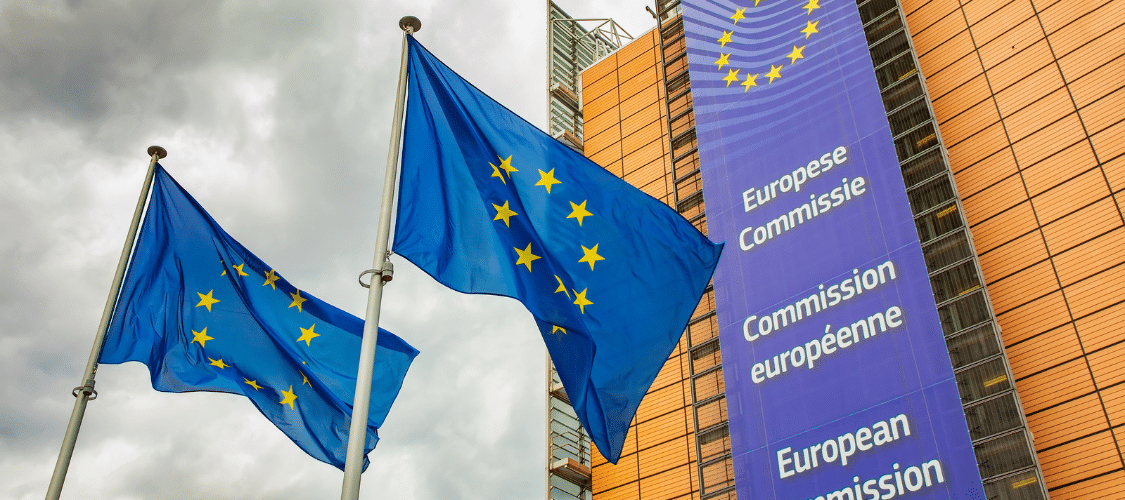Since the Russian invasion of Ukraine in February 2022 and the sanctions taken against Russia, liquefied natural gas (LNG) has been booming, especially because of the Russian pipeline gas supply drop. The figures from the recent Banking on Climate Chaos report confirm this trend: European banks have financed the companies involved in LNG expansion to the tune of US$103.2 billion between 2021 and 2023. The pace of LNG development is such that all new infrastructure could become stranded in the near future (1). In addition to being incompatible with the International Energy Agency (IEA)’s Net Zero scenario, new terminals are a threat to the environment and human rights. Banks should put an immediate end to their support to LNG development.
The world’s 60 largest banks provided
to companies developing LNG terminals in 2023.
Banking to companies expanding LNG has increased in the past year. This is one of the findings of the 2024 Banking on Climate Chaos (2), a report published by Rainforest Action Network in collaboration with seven other organizations including Reclaim Finance, which aggregates all financing from the world’s 60 largest banks to the fossil fuel industry since 2016 (3).
These 60 banks have provided to companies developing LNG terminals in 2023, US$121 billion (4), an additional 3% compared to 2022. Every new export terminal is contrary to climate objectives, including containing global warming under 1.5°C (5); also, every new facility threatens ecosystems and human communities and locks entire regions into long-term dependency to fossil gas. The two main European bank countries that are supporting LNG are Spain and France, behind North American, Japanese and Chinese banks (6).
Different dynamics regarding LNG financing among European banks
Europe is one of the areas where LNG expansion is strong, driven by concerns about energy security on the continent. Indeed, since the beginning of the war in Ukraine, 13 additional regasification facilities were developed and brought into use in European countries with access to sea (7). Liquefaction terminals projects overseas, in the United States and in Qatar for exemple, are designed to supply Europe. Among the expanders supported by European banks, we find European utilities active in regasification (Engie, RWE, etc), but not only: the credit tap is also open for companies in liquefaction (Venture Global LNG, Sempra, NextDecade or Cheniere Energy) as well as major and national oil companies, mostly active in liquefaction.
As a consequence, European banks weigh 28% of the US$365.6 billion allocated to companies expanding LNG between 2021 and 2023. Six European banks are found within the global top 20 bankers of LNG developers in 2023: Santander, Intesa Sanpaolo, Crédit Agricole, Deutsche Bank, Barclays and UniCredit. Two European countries have major banks showing an increase in financing to LNG between 2021 and 2023: Spain and Italy, the first one being the European leader in terms of regasification capacities. The aggregated financing from all three Spanish banks (8) tripled and that of the two Italian banks (9) doubled over this time period.
Table 1. Top 23 banks from geographical Europe ranked by aggregated amount of financing to LNG expansion over 2021-2023
| Rank | European banks | Financing to LNG expansion (in US$ million) | % of evolution 2022-2023 |
|||
|---|---|---|---|---|---|---|
| 2021 | 2022 | 2023 | Total | |||
| 1 | Santander | 1,822.6 | 2,328.5 | 6,820.8 | 10,972.0 | +193 |
| 2 | Deutsche Bank | 4,051.8 | 2,902.4 | 2,662.0 | 9,616.3 | -8 |
| 3 | Barclays | 3,315.9 | 3,682.5 | 2,474.5 | 9,472.9 | -33 |
| 4 | Crédit Agricole | 2,395.5 | 2,686.4 | 3,351.7 | 8,433.6 | +25 |
| 5 | Société Générale | 3,707.9 | 2,437.2 | 1,994.3 | 8,139.4 | -18 |
| 6 | BNP Paribas | 3,095.1 | 3,144.8 | 1,784.2 | 8,024.1 | -43 |
| 7 | HSBC | 3,793.6 | 1,414.0 | 2,051.3 | 7,258.9 | +45 |
| 8 | Intesa Sanpaolo | 1,163.6 | 1,938.4 | 3,410.7 | 6,512.7 | +76 |
| 9 | ING Group | 1,497.1 | 2,239.9 | 1,606.6 | 5,343.6 | -28 |
| 10 | UBS | 2,697.9 | 1,106.6 | 1,113.3 | 4,917.8 | +1 |
| 11 | UniCredit | 847.5 | 1,847.6 | 2,101.7 | 4,796.9 | +14 |
| 12 | BBVA | 1,012.9 | 1,252.1 | 2,028.5 | 4,293.5 | +62 |
| 13 | Standard Chartered | 1,446.9 | 1,054.8 | 1,455.3 | 3,956.9 | +38 |
| 14 | Groupe BPCE | 1,053.9 | 1,278.6 | 1,488,2 | 3,820.7 | +16 |
| 15 | CaixaBank | 262.1 | 755.8 | 852.6 | 1,870.6 | +13 |
| 16 | NatWest | 752.1 | 609.7 | 133.9 | 1,495.7 | -78 |
| 17 | DZ Bank | 193.0 | 127.8 | 688.7 | 1,009.6 | +439 |
| 18 | Lloyds Banking Group | 303.0 | 252.4 | 0 | 555.4 | -100 |
| 19 | Nordea | 302.8 | 0 | 200.0 | 502.8 | / |
| 20 | La Banque Postale | 279.4 | 0 | 112.5 | 391.9 | / |
| 21 | Rabobank | 0 | 235.3 | 0 | 235.3 | -100 |
| 22 | Crédit Mutuel | 63.9 | 0 | 150.5 | 214.4 | / |
| 23 | Danske Bank | 0 | 0 | 0 | 0 | / |
Source: Banking on Climate Chaos report, 2024.
Santander appears as the first European support to LNG expansion in 2023, and Intesa Sanpaolo second highest. Santander even ranks third globally, which is all the more striking as it is only 13th for all fossil fuel expansion in 2023. Its top five clients of 2023 are all LNG developers, including Venture Global LNG, the biggest LNG expander worldwide, and NextDecade Corp, the main firm behind the Rio Grande LNG project. Among companies most financed by Intesa Sanpaolo, one also finds NextDecade, as well as regasification terminal developer Snam SpA.
European banks must either adopt first commitments or improve existing ones
Banks with no restrictions at all on LNG (10) have free hands to bring support to companies expanding LNG, but also to directly support projects that these firms develop. Neither Santander nor Intesa Sanpaolo, both backing the Rio Grande LNG terminal in March 2023, have implemented any restrictions towards the LNG sector. These two banks are among the handful that have continuously increased their financing to LNG expansion between 2021 and 2023, along with French banks Crédit Agricole and BPCE (11).
However, adopting a policy for one sector does not mean giving up all support to its expansion. When adopting LNG restrictions, banks often take a piecemeal approach. Examples of this are ING, involved in Plaquemines and Port Arthur LNG after its March 2022 policy on LNG, or HSBC, supporting Rio Grande LNG despite its December 2022 commitment. The secret behind this trick: excluding only new LNG terminals directly associated with new gas fields (12). BPCE, which supported Plaquemines and Port Arthur LNG export terminals, has even weaker restrictions towards liquefaction terminals, only targeting some facilities fed with shale gas (13). This is without considering decisions from banks not to support projects on a case-by-case basis (14), showing a fear of reputational risk more than willingness to align with science.
Apart from La Banque Postale, no major bank has taken restrictions towards companies expanding LNG. Nothing prevents European banks from supporting the biggest LNG developers, which they obviously do. Among companies most financed in 2023 we find, again, Venture Global LNG and NextDecade (15), not to mention oil and gas majors like Shell or TotalEnergies (16). At a time when some large European banks slowly begin to reduce the money flow to these big integrated firms, other large LNG expanders, which are equally as destructive, should not slip through the net.
Banks must take action against LNG development. On the one hand, they must adopt the strongest restrictions possible on project financing and close the loopholes allowing them to keep financing some of the worst LNG facilities. On the other hand, they must also end their support to companies responsible for expanding liquefied gas, whether they are integrated oil and gas companies, LNG pure players or utility companies.



